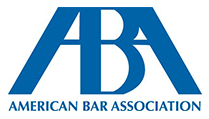Our Medical Malpractice Legal Fee Structure
When a person has been harmed due to the negligence of a medical professional, there are many questions, such as how to prove liability and whether to retain an attorney. One of the first questions that an injured person has is how to pay for the services of an experienced attorney. The fact is that there are many different types of fee structures and it is very important to understand how these different structures function.
Fee Agreements May Vary Widely
Different legal fee structures provide victims of medical malpractice with options to pursue legal actions. This provides a lifeline for individuals and families that are drowning in medical bills and experiencing financial and emotional devastation. There is risk for law firms in taking on medical malpractice cases without ongoing payments, which is why there is a risk assessment process. Although Stern Law, PLLC does not take on every case, our attorneys and other legal professionals work hard to ensure that people who have suffered after receiving medical care get the answers that they need.
When a person consults with an attorney, there are several different fee structures that may be offered, including:
- A flat fee – The attorney sets a monetary amount for which he will handle the entire case;
- An hourly rate – This is a set rate for each of the individuals who will work on a particular case. There is a sliding scale where more experienced attorneys will earn a higher rate, down to paralegals and other non-attorney staff, who will bill out their time at significantly lower rates;
- A monthly retainer – With this arrangement, the client will pay a sum of money to the lawyer or law firm each month and the fees are billed against the retainer. Depending on the amount of work being done for a case in a particular month, this retainer may have to be refreshed more than once per month. If there is any retainer remaining at the end of the case, that money will be returned to the client; and
- A contingency fee – Most lawyers and law firms that represent individuals who have been harmed as a result of medical malpractice enter into a contingency fee arrangement with their clients. This means that the attorney will represent the person without billing for work, but may still send ongoing invoices for out-of-pocket expenses, but will take a percentage of any settlement or jury award that may be collected. This allows a victim of negligence to get the legal help that he needs, even if he does not have the economic resources to pay for an attorney’s time during a lengthy legal proceeding.
When an attorney enters into a contingency fee agreement, he is taking the risk that he will be able to succeed in getting his client a positive outcome. This is a significant risk for the attorney, which often is reflected in the percentage of the payment that is paid to the attorney contingent upon a successful outcome.
Make Sure that Everything is in Writing
When a client enters into a fee agreement with an attorney, it is necessary to memorialize all of the critical terms in writing. This specifically applies to the fee agreement, which should include:
- The specific fee structure to which the parties have agreed – this should include how the attorneys and their legal team are going to be paid. Regardless of whether the parties have decided on a flat fee, hourly rate, monthly retainer, or contingency fee, the details of when and how payment is going to be tendered should be clearly set forth; and
- The arrangement for the payment of expenses – even where there is a contingency fee agreement, there may be costs that the client is obligated to pay while the case is moving forward. How these expenses are managed should be part of the agreement. There are different arrangements that can be made, including some situations where the law firm will pay the expenses and then deduct these costs from any jury award or settlement before distributing the payment to the client and the attorney.These costs may include:
- Costs associated with the preparation of documents, the filing of court papers, and other administrative costs;
- Filing fees for court papers;
- Fees associated with the taking and defending of depositions;
- Costs for expert witnesses;
- Expenses relating to medical exams that are necessary for ongoing court actions; and
- Other costs relating to the litigation.
It is very important for a person to make an arrangement that works for him and his family. Once the decision has been made, it also is necessary execute a retainer agreement, creating a contract between the client and his attorney. This is critical to provide clarity as to the services that are going to be provided.
Stern Law, PLLC Fights for the Rights of Medical Malpractice Victims
After a person has been harmed because a doctor or other medical professional made a serious mistake, the recovery process can be long and painful. It is crucial to have the right legal help in order to get a victim and his family the help that he needs. At Stern Law, PLLC, we work with individuals who have been devastated by medical malpractice, entering into a fee structure that meets the needs of our clients. We believe that it is critical to have legal resources available for our clients 24 hours a day, seven days a week in order to answer questions and provide information. Call us at 1-844-808-7529 or fill out an online contact form in order to learn how we can help you get through this difficult time.













